Of course, the history of depicting dance in the visual arts should begin with rock inscriptions, ancient cave paintings, etc., but I suggest not dwelling on them. In ancient times, a person painted a dance: filled with mystical ritual meaning or otherwise. Being, so to speak, Western people, let's turn our interest to the view of our Western culture on dance and its changes depending on the era and cultural trends.
Among his most important works concerning the world of ballet. One of the artist's first works to explore the theme of dancers, the painting depicts a group attending a dance lesson given by an old master, who appears as a vanishing point, highlighted by floor lines and architectural moldings.
In this image, Degas represents a random moment from a thousand possible lessons, so you can find natural and spontaneous expressions, such as the girls speaking in the background or, moreover, the annoyed grimace of the girl sitting on the piano to the left that scratches her back.
Most of the images are available in enlarged form - click on the image to open the enlarged version in a new window.
Early examples
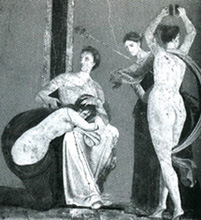 Ancient amphorae often contain images of dancers. Their movements are not constrained, majestic, strong, confident. Dance is the embodiment of freedom of spirit, movement of the soul. Here is fragment of a fresco from the Villa of Mysteries in Pompeii(on right).
Ancient amphorae often contain images of dancers. Their movements are not constrained, majestic, strong, confident. Dance is the embodiment of freedom of spirit, movement of the soul. Here is fragment of a fresco from the Villa of Mysteries in Pompeii(on right).
The interior stage is made spacious by an accelerated perspective view that breaks to the right, emphasized by parquet lines. The colors, subtle, are fair to the materials: the respect of tulle and the weakness of satins are respected. During the lesson, oblivious to being waylaid by Degas, some of the dancers take a break: one in the foreground checks out some moves while behind her another adjusts his stockings. she is a woman, bent over, and in the upper right corner she can barely see the funny profile of another lady with a curly red feather who enlivens the whole scene.
 The religious Middle Ages regarded dance as a harmful and devilish dance of the body, which is why it is so difficult to find old paintings on the theme of dance. The Renaissance era rehabilitated many things, although you still rarely see dancing in paintings. With some stretch, "dance paintings" can be classified as " Three Graces by Sandro Botticelli(left).
The religious Middle Ages regarded dance as a harmful and devilish dance of the body, which is why it is so difficult to find old paintings on the theme of dance. The Renaissance era rehabilitated many things, although you still rarely see dancing in paintings. With some stretch, "dance paintings" can be classified as " Three Graces by Sandro Botticelli(left).
All the freshness of the work comes from obvious improvisation. The peculiarity of the painting lies in the initial choice of observation point, high and diagonal for the subjects, as well as the framing, which does not pretend to embrace the bodies of the characters, but, as in an instant photograph, “cut out”, as if by chance, part of the figure of the subject in the foreground plan. This trick, together with the tracking of the parquet gears, helps create the illusion of a very wide and deep space in relation to continuity with the real space.
Warm tones and a little monotonous are awakened by the lively turquoise of the second ballerina's bow and the red lobster that accents the dress. old woman, and then returns to the other woman's hat. And some paintings of dancers dancing on stage, in which he carefully takes care of the effects of light, are among them.
If we consider the period from the 15th century to the end of the 19th, then we will find very few works. Dancers and choreographers were extremely rarely the people that an artist would like to capture or for whose portrait he could receive an order.
Here are rare exceptions - people who influenced the development of Western choreography.
Louis 14th, also called the "Sun King"- he danced himself in court ballet performances, attracted courtiers to this business, established the first Academy of Dance, where professional training of dancers took place. It was founded in Paris. "The Sun King" appears before us in a series of engravings.
"Ballet proof on stage." "Two dancers on stage." In the fifties, 800 years in Italy, a guest of his uncle: Baron Balelli; then visit Rome, Viterbo, Orvieto, Perugia, Assisi and Florence, where he is always with his uncle; The Bellelli family begins the picture. From “60 to” 65, under the influence of Italian masters, he devoted himself to historical and mythological painting. After a trip to America, to New Orleans, he took part in the first exhibition of the Impressionists with ten works and died in Paris on September 27.
We discover that one of the most famous artists of all time is certainly an interesting moment to analyze in art history, thanks to his worldwide fame and unique style. The artist in question is Edgar Degas, a great artist who lived in the nineteenth century, was associated with the school of impressionism along with other very important artists who made history, such as Claude Monet, Paul Cezanne or Camille Pissarro, who entered the history, moreover, thanks to their paintings, very close to the impressionist school.

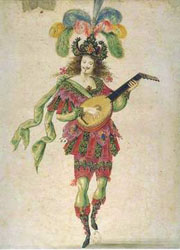


His portrayal reveals the lightness, ease and sophistication that the ballet borrowed from the French court led by Louis the 14th, as opposed to the harsh and even rude Italian school. All these features are manifested both in Louis’s appearance and in his dance poses. Even in a warrior costume, he looks more like a fairy from some good fairy tale.
Here you can read the life story of Edgar Degas, but also a lot of other information related to Degas's dancers, the impressionist Edgar and find a lot important information, which, in addition to informing us of the relevance of Degas's name in the modern art world, without neglecting the projects of Degas's dancers and works.
Edgar Degas - Self-Portrait. But what is impressionism? It is simply a "painterly movement" born in the nineteenth century in response to the style of works that were exhibited in a formal exhibition. The main characteristics of this movement are exterior painting and the new use of light.
Nicolas Lancret depicted the dancer Camargo for us in the painting of the same name. This lady revolutionized the art of 17th century dance by shortening her dress a little, exposing her ankles and a little bit of her calves. The shorter dress allowed and even forced her to perform more difficult and interesting leg movements. Before her, the only visible fragments of the legs were feet in shoes, and at the extreme - ankles. In the picture we see the dancer in a “flying” pose that requires balance, her legs are turned out. Also in Lancret we find dance from a social perspective: the courtiers are dancing at a picnic, having fun (the painting “Dance”).
The basis of this procedure was painting "in captivity", that is, on the street, a place where the artist realized his vision and returned what he saw on the canvas, and then, in his studio, changed it again, if necessary. Everything is based, in synthesis, on perception, without excessive attention to detail, but in the moment.
The impressionist Edgar, unlike his "colleagues", would not be "totally" attached to this style of painting, but would develop one of his own, in the fields of impressionism, both for themes and style. Anastas Konstantinov died early in the morning, June 2, only at the age of 61 from a stroke, the site trained. His works are known from Germany, Japan and the United States, where the artist lives and works for some time.
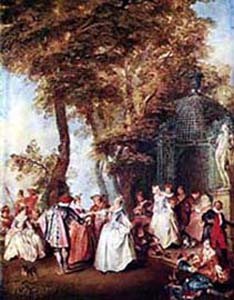
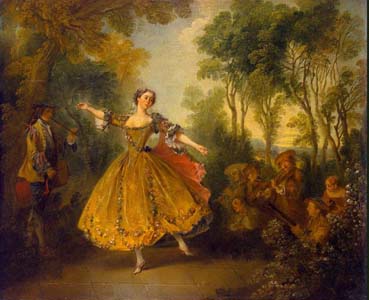
 Another famous French painter of the same times Nicolas Poussin in the 1630s paints "Dance to the Music of Time"- a very interesting picture. It is a kind of appeal to antiquity, so it is natural that the dance again acquires freedom and emotionality.
Another famous French painter of the same times Nicolas Poussin in the 1630s paints "Dance to the Music of Time"- a very interesting picture. It is a kind of appeal to antiquity, so it is natural that the dance again acquires freedom and emotionality.
His 40-year creative career includes more than 40 solo and 120 group exhibitions. The Plovdiv artist received a bow for his work in America. Anastas Konstantinov, known to the Bulgarians as the “Bulgarian Rainbow,” was able to see how connoisseurs from the ocean bought his paintings in Pittsburgh and kissed them as icons. You see, these are new American icons heard from a British maestro in the States. And he simply repeated the answer of his manager, Mr. Celli.
Mr. Chelic himself is not a random person in America. And with a clear goal - to put Anastasia’s art on the American art market. This program was created with the help of Mr. Monty Crivella, who is a consultant on the same project. It started when they consulted American experts on the art of one of the best-selling Bulgarian artists in Europe. Their assessment was that with good management art and the quality of painting that Anastasa created, they could take their art from the top 5% for America.
 An interesting anonymous Neapolitan engraving from the late 17th century is based on a series of engravings by Jacques Calot dedicated to the Italian Commedia Dell'Arte. The characters in the picture are captured in expressive, even inharmonious poses.
An interesting anonymous Neapolitan engraving from the late 17th century is based on a series of engravings by Jacques Calot dedicated to the Italian Commedia Dell'Arte. The characters in the picture are captured in expressive, even inharmonious poses.
Impressionists
They were amazed that such an artist remained before their eyes for so long. Their explanation was that it happened for political reasons due to the Berlin Wall and the division of the world. The program itself includes participation in world art fairs, independent exhibitions in galleries high level, meetings with critics, interviews with the American press and others.
In America, Anastas collected about 26 paintings for his stay there. And the exhibition he discovers is more than planned, because there were already his paintings. There, smoke, taste and buy. We spoke to the owner and he handed us a malt whiskey. It was a great meeting with conversations about art and other topics. Just before we left, the owner invited some kids we knew were his. At least it was a girl of about five who appeared with an incredible smile and radiance.
The image of dance changed radically thanks to the Impressionists. These artists were looking for new forms of displaying the world in which one could feel light, heat or cold, wind, even smell, and convey subtle sensations that could not be reflected in a thoroughly accurate drawing of objects. And we will, of course, talk about Degas. But before we dwell on it, let us mention paintings on our dance theme, written in the same period as Degas’s ballet cycle.
At some point, if you look at her eyes without seeing her lips, you will notice that the eyes are actually laughing. The painting is called "Mackenzie's Kiss." It was the journalist's choice. I have painted in many places around the world that affect me in different ways. That's why my paintings are different. For example, in Greece, for the first time, Blue colour, which was later called "Byzantine blue" by Professor Aikia Jurova. Their banner is white and red, and my pictures were red drops of blood. Everything painted there is yellow, orange and red, and the heat creates a warmth that also influenced my later work.
Renoir and dance
 Renoir's paintings glow with love for life and the world around them, they carry warm feelings, permeated with the joy of being. A series of paintings on a dance theme: "Dancing at the Moulin de la Galette" 1876, "Dance at Bougeval" 1883, "Dance in the City" and "Dance in the Country". Depicted are couple dances that people indulge in, putting their leisure time into a cultural form. We see communication between a man and a woman - different depending on their social affiliation. Manners in the village, of course, are different than in the city, which is curiously evident in the poses and expressions of faces. But with regard to dance as an art, these paintings give us nothing.
Renoir's paintings glow with love for life and the world around them, they carry warm feelings, permeated with the joy of being. A series of paintings on a dance theme: "Dancing at the Moulin de la Galette" 1876, "Dance at Bougeval" 1883, "Dance in the City" and "Dance in the Country". Depicted are couple dances that people indulge in, putting their leisure time into a cultural form. We see communication between a man and a woman - different depending on their social affiliation. Manners in the village, of course, are different than in the city, which is curiously evident in the poses and expressions of faces. But with regard to dance as an art, these paintings give us nothing.
Italy had classical elements that are not common to all my work. Picasso was the first child of José Ruiz Blasco and Maria Picasso López. Picasso's father, José Ruiz, was an artist whose property was a realistic view of birds. He was an art professor at a trade school and a museum curator for most of his life. Picasso, as a boy, showed passion and feeling for drawing. Father taught Picasse various techniques, such as drawing and oil painting. Picasso also studied at the Academy of Fine Arts in Madrid, but did not complete his studies and left after a year.

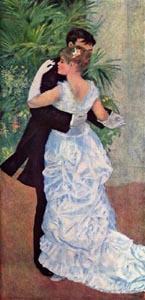
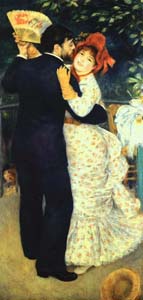
Henri Matisse - just one painting, but what a painting!
Matisse's famous painting "Dance" has long excited the minds of the world! His painting is not easy for many to accept - for this it is worth seeing many of his works at once in one place at one time in order to appreciate the zest of his style. Not everyone knows that there is a second painting “dance” by the same artist. Here they are both.
After studying in Madrid, he moved to Paris, the art center of Europe. The first figure was illustrated by himself. Picasso has since signed Picasso. The first years of the twentieth century were spent by Picasso between Barcelona and Paris. It is she who appears in many paintings of that time. Having gained fame and some things, Picasso left Olivier Marcello Humbert. Picasso expressed his love for her in many Cuban paintings. They had their son Paul together, who later became a motorcyclist and driver for his father.
His marriage to Cholk soon ended with a farewell. He did not want to divorce Picasso, because according to French law, Chokhlov would have lost half of his property. Picasso had been in contact with Walter for a long time and had a daughter with her, whom he named Maya. Marie-Thérèse lived the rest of her life in the hope that Picasso would take her one day, hanging four years after his death. Another of Picasso's loves was Jacqueline Roque, who worked in a ceramics workshop in Madura where Picasso created and painted ceramics. Besides his wife, he had many mistresses.
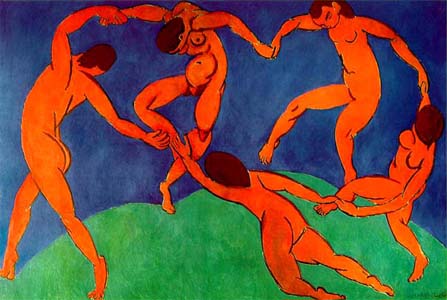

Edgar Degas and his ballerinas
Now we can dwell in detail on Edgar Degas. Moreover, we will now see how different his attitude and attention to dance was from his compatriots and contemporaries. Although sometimes they like to write about him that, they say, he simply liked half-naked ladies, especially since they more often publish pictures of ballerinas changing clothes or warming up. But if you look closely at a large number his paintings, then you will not perceive such a one-sided approach to his work. The pictures will speak for themselves (read the continuation below - after the pictures).
He was married twice and had four children with three women. Picasso was a famous person, and people were interested in both his work and his personal life. Every time Picasso appeared in a film, he played himself. Picasso's late works were a mixture of styles, his means of expression constantly changing until the end of his life. Picasso dedicated himself to his work, he was more daring, his work was more vibrant and expressive. His paintings were not well received at the time, but Picasso was subsequently recognized as an artist who was often far ahead of his time.


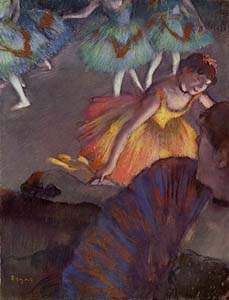





Edgar Degas became interested in ballets in the 70s and remained a fan of this art until the end of his days. In his early paintings, dance appears before us as a magical fairy-tale world of unusually harmonious shapes and colors. Everything was leading to Edgar Degas becoming an academic artist: he was from a wealthy family and was studying examples of classical Italian art in Italy. But he was to become one of the discoverers of a new art - impressionism.
 "Dance foyer of the Opera on Rue Le Peletier"(right) 1872 It is unusual that the center of the picture is actually an empty space; it is into this that the soloist is directed, nervous about showing her performance in front of the choreographer. And this empty space in the center increases the tension emanating from the dancer’s figure.
"Dance foyer of the Opera on Rue Le Peletier"(right) 1872 It is unusual that the center of the picture is actually an empty space; it is into this that the soloist is directed, nervous about showing her performance in front of the choreographer. And this empty space in the center increases the tension emanating from the dancer’s figure.
![]() "Dance class", 1874. Jules Perrot, a master of romantic ballet, is depicted together with the dancers. Each dancer is busy with her own business. These dancers still have fragility, spirituality, grace, which will often then give way to fatigue and exhaustion, angularity and awkwardness, doom. Perhaps the knowledge gained about hard work at the machine had an effect. (Those who practice classical dance at Divadance will probably understand this perfectly well). Perhaps the paintings were influenced by personal events in the artist’s life.
"Dance class", 1874. Jules Perrot, a master of romantic ballet, is depicted together with the dancers. Each dancer is busy with her own business. These dancers still have fragility, spirituality, grace, which will often then give way to fatigue and exhaustion, angularity and awkwardness, doom. Perhaps the knowledge gained about hard work at the machine had an effect. (Those who practice classical dance at Divadance will probably understand this perfectly well). Perhaps the paintings were influenced by personal events in the artist’s life.
Particularly interesting appear before us stage rehearsals through the eyes of an artist. The exhausting nervousness of this process is reflected in a special palette, reminiscent of a slightly colored black and white photograph. As well as the angularity of the lines, tension or fatigue on the faces of the participants in the process.



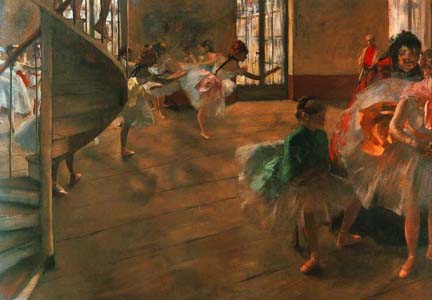


 Painting "Blue Dancers"(left) attracts the eye with amazing poetry of color and line. Movement can almost be seen, although painting is by definition static.
Painting "Blue Dancers"(left) attracts the eye with amazing poetry of color and line. Movement can almost be seen, although painting is by definition static.
Paintings depicting dancers on stage show us very another world - different colors, the magical illusion of fairy tales and transformations. These are: “Ballet performance, view of the stage from the box”, “Ballet”, “Final arabesque”. In the first two, not only the stage “comes into the frame,” but also a “piece” of the hall with the audience. Degas puts them side by side as if for contrast to emphasize the magic ballet world. In the last of these three paintings there is no audience, the dancer is holding a bouquet in her hand. The combination of colors creates a dramatic atmosphere - a contrast between the ballerina's fatigue and the triumph of her success.
Edgar Degas seemed to point out a magic window into another reality, in which you can feel something inaccessible in ordinary life, but at the same time created by people of flesh and blood, exhausted from hard work and fatigue. And many thanks to him for this!
Of course, the history of depicting dance in the visual arts should begin with rock inscriptions, ancient cave paintings, etc., but I suggest not dwelling on them. In ancient times, a person painted a dance: filled with mystical ritual meaning or otherwise. Being, so to speak, Western people, let's turn our interest to the view of our Western culture on dance and its changes depending on the era and cultural trends.
Most of the images are available in enlarged form - click on the image to open the enlarged version in a new window.
Early examples
 Ancient amphorae often contain images of dancers. Their movements are not constrained, majestic, strong, confident. Dance is the embodiment of freedom of spirit, movement of the soul. Here is fragment of a fresco from the Villa of Mysteries in Pompeii(on right).
Ancient amphorae often contain images of dancers. Their movements are not constrained, majestic, strong, confident. Dance is the embodiment of freedom of spirit, movement of the soul. Here is fragment of a fresco from the Villa of Mysteries in Pompeii(on right).
 The religious Middle Ages regarded dance as a harmful and devilish dance of the body, which is why it is so difficult to find old paintings on the theme of dance. The Renaissance era rehabilitated many things, although you still rarely see dancing in paintings. With some stretch, "dance paintings" can be classified as " Three Graces by Sandro Botticelli(left).
The religious Middle Ages regarded dance as a harmful and devilish dance of the body, which is why it is so difficult to find old paintings on the theme of dance. The Renaissance era rehabilitated many things, although you still rarely see dancing in paintings. With some stretch, "dance paintings" can be classified as " Three Graces by Sandro Botticelli(left).
If we consider the period from the 15th century to the end of the 19th, then we will find very few works. Dancers and choreographers were extremely rarely the people that an artist would like to capture or for whose portrait he could receive an order.
Here are rare exceptions - people who influenced the development of Western choreography.
Louis 14th, also called the "Sun King"- he danced himself in court ballet performances, attracted courtiers to this business, established the first Academy of Dance, where professional training of dancers took place. It was founded in Paris. "The Sun King" appears before us in a series of engravings. 



His portrayal reveals the lightness, ease and sophistication that the ballet borrowed from the French court led by Louis the 14th, as opposed to the harsh and even rude Italian school. All these features are manifested both in Louis’s appearance and in his dance poses. Even in a warrior costume, he looks more like a fairy from some good fairy tale.
Nicolas Lancret depicted the dancer Camargo for us in the painting of the same name. This lady revolutionized the art of 17th century dance by shortening her dress a little, exposing her ankles and a little bit of her calves. The shorter dress allowed and even forced her to perform more difficult and interesting leg movements. Before her, the only visible fragments of the legs were feet in shoes, and at the extreme - ankles. In the picture we see the dancer in a “flying” pose that requires balance, her legs are turned out. Also in Lancret we find dance from a social perspective: the courtiers are dancing at a picnic, having fun (the painting “Dance”). 

 Another famous French painter of the same times Nicolas Poussin in the 1630s paints "Dance to the Music of Time"- a very interesting picture. It is a kind of appeal to antiquity, so it is natural that the dance again acquires freedom and emotionality.
Another famous French painter of the same times Nicolas Poussin in the 1630s paints "Dance to the Music of Time"- a very interesting picture. It is a kind of appeal to antiquity, so it is natural that the dance again acquires freedom and emotionality.
 An interesting anonymous Neapolitan engraving from the late 17th century is based on a series of engravings by Jacques Calot dedicated to the Italian Commedia Dell'Arte. The characters in the picture are captured in expressive, even inharmonious poses.
An interesting anonymous Neapolitan engraving from the late 17th century is based on a series of engravings by Jacques Calot dedicated to the Italian Commedia Dell'Arte. The characters in the picture are captured in expressive, even inharmonious poses.
Impressionists
The image of dance changed radically thanks to the Impressionists. These artists were looking for new forms of displaying the world in which one could feel light, heat or cold, wind, even smell, and convey subtle sensations that could not be reflected in a thoroughly accurate drawing of objects. And we will, of course, talk about Degas. But before we dwell on it, let us mention paintings on our dance theme, written in the same period as Degas’s ballet cycle.
Renoir and dance Renoir's paintings glow with love for life and the world around them, they carry warm feelings and are permeated with the joy of being. A series of paintings on a dance theme: "Dancing at the Moulin de la Galette" 1876, "Dance at Bougeval" 1883, "Dance in the City" and "Dance in the Country". Depicted are couple dances that people indulge in, putting their leisure time into a cultural form. We see communication between a man and a woman - different depending on their social affiliation. Manners in the village, of course, are different than in the city, which is curiously evident in the poses and expressions of faces. But with regard to dance as an art, these paintings give us nothing.
Renoir's paintings glow with love for life and the world around them, they carry warm feelings and are permeated with the joy of being. A series of paintings on a dance theme: "Dancing at the Moulin de la Galette" 1876, "Dance at Bougeval" 1883, "Dance in the City" and "Dance in the Country". Depicted are couple dances that people indulge in, putting their leisure time into a cultural form. We see communication between a man and a woman - different depending on their social affiliation. Manners in the village, of course, are different than in the city, which is curiously evident in the poses and expressions of faces. But with regard to dance as an art, these paintings give us nothing. 


Henri Matisse - just one painting, but what a painting!
Matisse's famous painting "Dance" has long excited the minds of the world! His painting is not easy for many to accept - for this it is worth seeing many of his works at once in one place at one time in order to appreciate the zest of his style. Not everyone knows that there is a second painting “dance” by the same artist. Here they are both. 

Edgar Degas and his ballerinas
Now we can dwell in detail on Edgar Degas. Moreover, we will now see how different his attitude and attention to dance was from his compatriots and contemporaries. Although sometimes they like to write about him that, they say, he simply liked half-naked ladies, especially since they more often publish pictures of ballerinas changing clothes or warming up. But, if you take a closer look at a large number of his paintings, you will not perceive such a one-sided approach to his work. The pictures will speak for themselves (read the continuation below - after the pictures). 







Edgar Degas became interested in ballets in the 70s and remained a fan of this art until the end of his days. In his early paintings, dance appears before us as a magical fairy-tale world of unusually harmonious shapes and colors. Everything was leading to Edgar Degas becoming an academic artist: he was from a wealthy family and was studying examples of classical Italian art in Italy. But he was to become one of the discoverers of a new art - impressionism.
 "Dance foyer of the Opera on Rue Le Peletier"(right) 1872 It is unusual that the center of the picture is actually an empty space; it is into this that the soloist is directed, nervous about showing her performance in front of the choreographer. And this empty space in the center increases the tension emanating from the dancer’s figure.
"Dance foyer of the Opera on Rue Le Peletier"(right) 1872 It is unusual that the center of the picture is actually an empty space; it is into this that the soloist is directed, nervous about showing her performance in front of the choreographer. And this empty space in the center increases the tension emanating from the dancer’s figure.
![]() "Dance class", 1874. Jules Perrot, a master of romantic ballet, is depicted together with the dancers. Each dancer is busy with her own business. These dancers still have fragility, spirituality, grace, which will often then give way to fatigue and exhaustion, angularity and awkwardness, doom. Perhaps the knowledge gained about hard work at the machine had an effect. (Those who practice classical dance at Divadance will probably understand this perfectly well). Perhaps the paintings were influenced by personal events in the artist’s life.
"Dance class", 1874. Jules Perrot, a master of romantic ballet, is depicted together with the dancers. Each dancer is busy with her own business. These dancers still have fragility, spirituality, grace, which will often then give way to fatigue and exhaustion, angularity and awkwardness, doom. Perhaps the knowledge gained about hard work at the machine had an effect. (Those who practice classical dance at Divadance will probably understand this perfectly well). Perhaps the paintings were influenced by personal events in the artist’s life.
Particularly interesting appear before us stage rehearsals through the eyes of an artist. The exhausting nervousness of this process is reflected in a special palette, reminiscent of a slightly colored black and white photograph. As well as the angularity of the lines, tension or fatigue on the faces of the participants in the process.





 Painting "Blue Dancers"(left) attracts the eye with amazing poetry of color and line. Movement can almost be seen, although painting is by definition static.
Painting "Blue Dancers"(left) attracts the eye with amazing poetry of color and line. Movement can almost be seen, although painting is by definition static.
Paintings depicting dancers on stage show us very another world - different colors, the magical illusion of fairy tales and transformations. These are: “Ballet performance, view of the stage from the box”, “Ballet”, “Final arabesque”. In the first two, not only the stage “comes into the frame,” but also a “piece” of the hall with the audience. Degas, as if for contrast, puts them side by side to emphasize the magic of the ballet world. In the last of these three paintings there is no audience, the dancer is holding a bouquet in her hand. The combination of colors creates a dramatic atmosphere - a contrast between the ballerina's fatigue and the triumph of her success.
Edgar Degas seemed to point out a magical window into another reality, in which you can feel something inaccessible in ordinary life, but at the same time created by people of flesh and blood, exhausted from hard work and fatigue. And many thanks to him for this!









